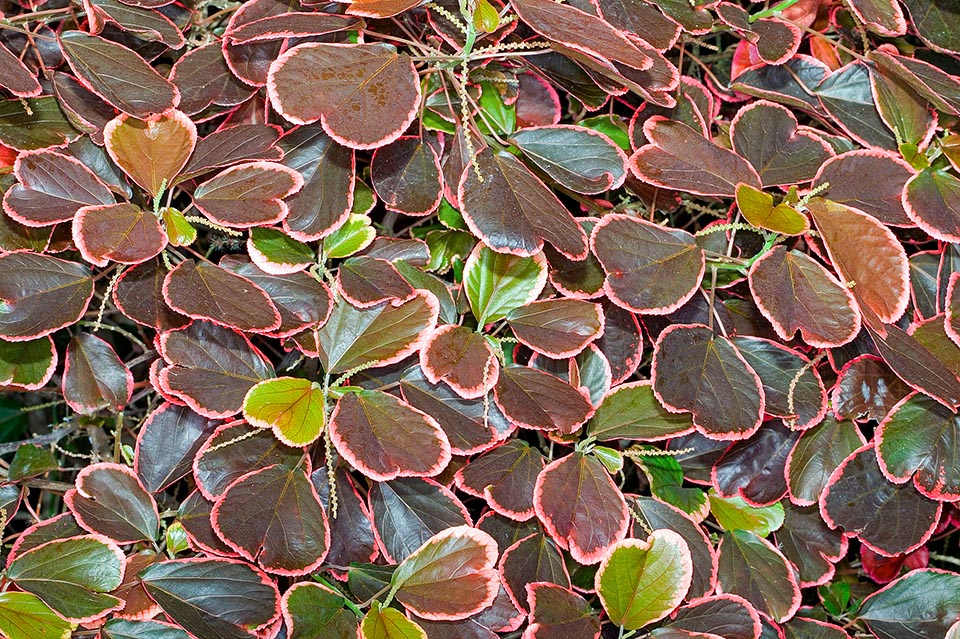Family : Euphorbiaceae

Text © Pietro Puccio

English translation by Mario Beltramini
The Acalypha wilkesiana Muell. Arg. (1866) ‘Obovata’ is native to the South Pacific islands (Bismarck Islands, Solomon Islands, Fiji, Vanuatu).
The name of the genus comes from the Greek “akalyphé” = nettle, given by Linnaeus, due to the resemblance of the leaves of some plants of the genus with those of the nettle (Urtica dioica); the name of the species is honoured to Charles Wilkes (1798-1877), commander of the USA exploring expedition in the South Pacific between 1838 and 1842.
Common names : “beefsteakplant”, “copperleaf”, “fire-dragon”, “Jacob’s coat”, “catch-me-if-you-can” (English); “Buntlaubiges Kupferblatt”, “Stecklinge Kupferblatt” (German); “acalyphe”, “foulard”, “dragon de feu”, “feuillage rouge” (French); “acalifa” (Spanish); “crista-de-Peru”, “acalifa”, “rabo-de-macaco”, “acalifa-vermelha” (Portuguese).
It is a fast growing evergreen shrub, which can reach the 3 metres of height. The leaves, obovate, long up to about 15 cm, with indented margins, are variously coloured in green and bronze, with a pink rimmed edge.

Acalypha wilkesiana 'Obovata' is a 3 m evergreen shrub variety, often grown in tropical and subtropical gardens due to its brightly coloured foliage © Giuseppe Mazza
Variety of great ornamental value due to its showily coloured foliage, widely cultivated in the tropical and subtropical countries, in full sun, for a more intense colouration, and protected from the strong winds; elsewhere, it is to be cultivated in pot, in order to be kept sheltered in winter, as it does not bear temperatures even of only few degrees over zero. It usually and easily multiplies by cutting.
Synonyms: Acalypha amentacea subsp. wilkesiana (Müll.Arg.) Fosberg (1980); Ricinocarpus wilkesianus (Müll.Arg.) Kuntze (1891); Acalypha circinata A.Gray ex Seem. (1862); Acalypha tricolor Seem. (1867); Acalypha musaica auct. (1877); Acalypha macafeeana Veitch (1878); Acalypha triumphans L.Linden & Rodigas (1888); Acalypha hamiltoniana Briant (1893); Acalypha godseffiana Mast. (1898); Acalypha illustris Pax & K.Hoffm. in H.G.A.Engler (1924); Acalypha torta Pax & K.Hoffm. in H.G.A.Engler, (1924); Acalypha compacta Guilf. ex C.T.White (1933).
→ To appreciate the biodiversity within the family EUPHORBIACEAE please click here.
